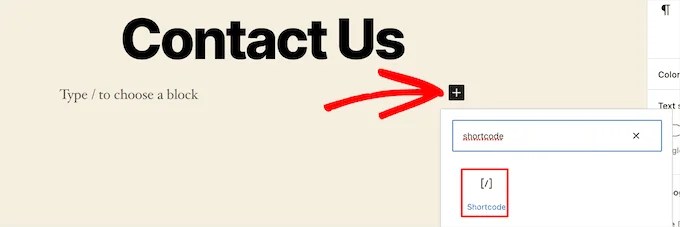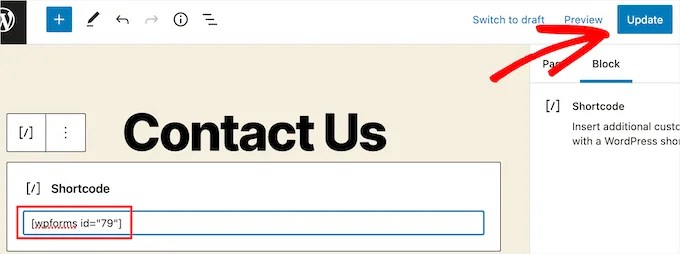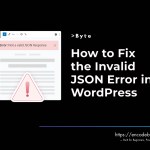A contact form is required for all websites on the internet. By filling out a form on your website, it enables website visitors to get in touch with you swiftly.
By default, WordPress does not come with a built-in contact form.
WPForms can help with this. The best WordPress contact form plugin, it makes it simple to design stunning contact forms for your website.
Step 1. Install WPForms Plugin in WordPress
You can install this plugin on your site by logging into your WordPress dashboard and going to Plugins » Add New.
Then, in the search field, type ‘WPForms’, and click on the ‘Install Now’ button.

This will automatically install the plugin on your site.
After that, you must activate the plugin by clicking the ‘Activate’ button.

Step 2. Create a Contact Form in WordPress
Now that you have activated WPForms, you are ready to create a contact form in WordPress.
To do this, navigate to WPForms » All Forms in your WordPress admin panel. Then, click the ‘Add New’ button.

For the sake of this example, we’ll choose the “Basic Contact Form” template. The Name, Email, and Message boxes will be added automatically.

To edit a form field, simply click on it.
When you click on a form field, it opens a ‘Field Options’ window on the left where you may make adjustments.

You may also adjust the order of the fields by dragging and dropping them.

If you want to add a new field, simply choose one from the list on the left sidebar.
You may drag it to your form or click on it, and it will be inserted automatically.

Be sure to click the “Save” button once you’ve finished modifying your form.
Step 3. WordPress Form Notification and Confirmation Configuration
You must carefully customize the form notification and form confirmation options after creating your contact form.
When a user submits a form on your website, a confirmation page appears. This may be whatever you’d like, from a straightforward thank-you to a website with downloadable Files.
The email you receive after someone submits the contact form on your WordPress blog is known as a form notification.
On the form builder, choose the “Settings” tab, followed by the “Confirmations” tab, to edit the confirmation message.
A default thank you message is already present.
Nevertheless, if you’d like, you may change this in the “Confirmation Message” box.

If you wish to redirect users after successful form submission instead of presenting a message, pick ‘Go to URL’ from the ‘Confirmation Type’ drop down.Finally, enter the URL to which you wish to redirect people.

Following that, you may double-check the form notification settings. Simply go to the same ‘Settings’ menu and select the ‘Notifications’ option.
WPForms’ biggest feature is that its default settings are perfect for novices. When you browse to the notification settings, all fields are dynamically pre-filled.

By default, alerts are delivered to the admin email address that you specified when you started your site.
If you wish to send it to a different email address, you can do so. If you wish to send the notice to numerous email addresses, simply separate each one with a comma.
The ‘Email Subject Line’ field is pre-populated with the name of your form. The ‘From Name’ area is pre-filled with your user’s name.

If you make changes here, remember to click the ‘Save’ button.
Step 4: Adding WordPress Contact Form in a Page
It’s time to add your WordPress contact form to a page now that you have finished setting it.
You may either create a new page in WordPress or add it to an existing contact page.
Just select Pages » Add New and give your page a name to create a new contact form page.WPForms also comes with a WordPress contact form shortcode. You can use this by visiting WPForms » All Forms and then copy the shortcode next to your form.

So, all you have to do is enter the page where you want to add it, click the “Plus” add block button, and then look for “Shortcode” in the list of available add-ons.
Next choose the “Shortcode” section.

Copy the shortcode above, and then paste it into the box.
As shown above, your contact form will then be live on your website when you click “Update” or “Publish.”
Shortcodes should be pasted and saved.

Here’s what the form looked like on a sample WordPress contact page:

If you liked this article, then please Like, comment and share.
Thank you.










